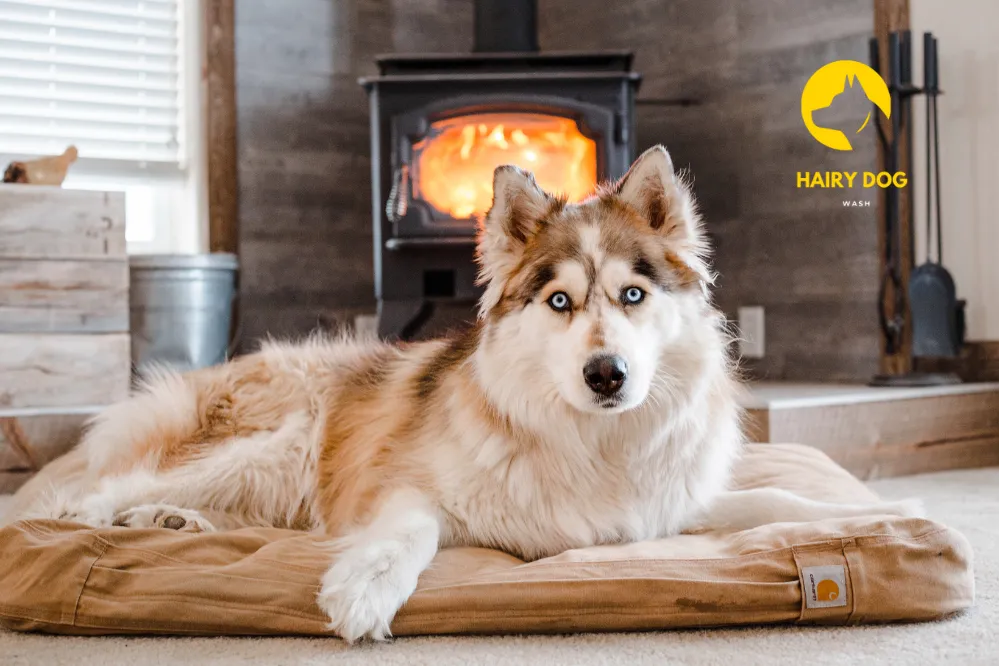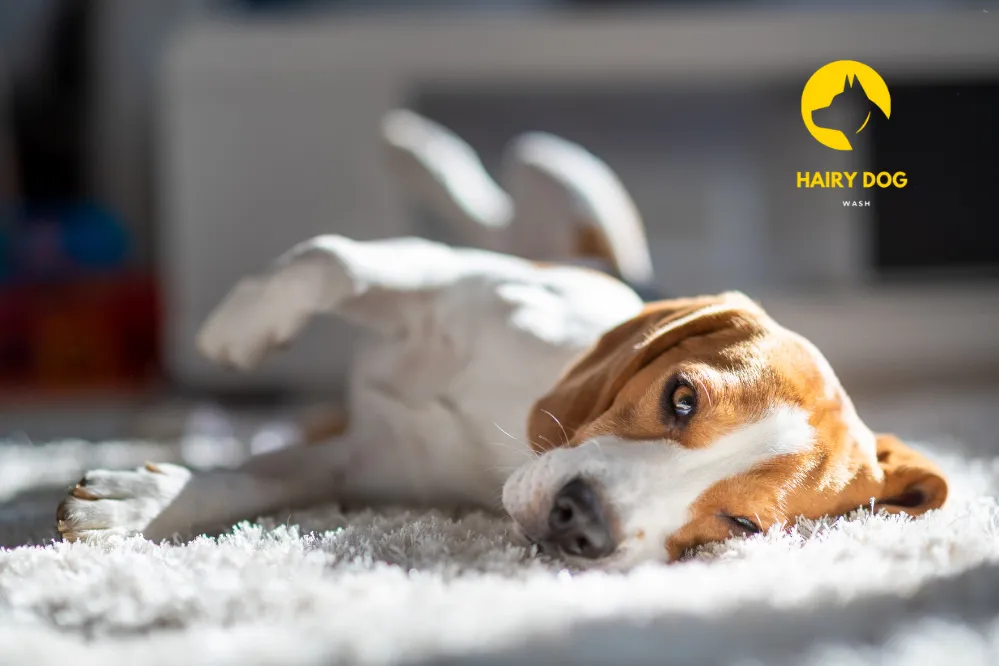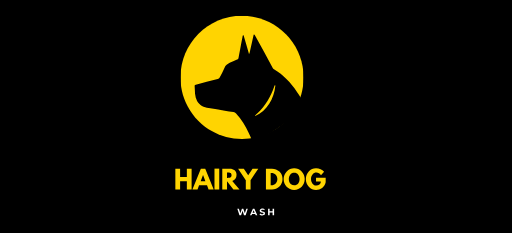Grooming is an essential part of a dog’s health and well-being, but for many dogs, the grooming process can be stressful. Whether it’s due to a fear of loud noises, unfamiliar environments, or past negative experiences, some dogs experience anxiety during grooming sessions. As responsible pet owners and professional groomers, it is our job to make the grooming experience as calm and stress-free as possible.
Keeping a nervous dog calm is not only beneficial for their mental health but also ensures that the grooming process is effective, thorough, and enjoyable for both the dog and the groomer.
In this blog, we will discuss five ways professional groomers keep nervous dogs calm during grooming. These strategies not only help reduce anxiety but also improve the overall experience for the dog. If your dog tends to get nervous during grooming appointments, these tips can help you understand how groomers work to make the process easier for your pet.
1. Gentle Handling and Patience

One of the most important ways we keep nervous dogs calm is through gentle handling and a lot of patience. When a dog is nervous or anxious, harsh movements or quick actions can increase their stress.
Professional groomers know how to approach anxious dogs with a calm and gentle demeanor. By moving slowly and speaking softly, we can help reassure the dog that there is no need to be afraid.
The key to this approach is taking the time to build trust with the dog before beginning the grooming process. This is especially important for dogs that have never been groomed before or have had negative experiences in the past.
Groomers may start by simply petting the dog, allowing them to sniff the grooming tools, or giving them short breaks to ensure that they don’t feel overwhelmed.
Patience is essential when dealing with nervous dogs. We understand that each dog has a different level of comfort, and we adjust our approach to meet their needs. Some dogs may need extra time to get comfortable with the grooming process, and that’s okay. The goal is to create a positive association with grooming, so taking it slow is often the best approach.
2. Creating a Calm and Safe Environment

The grooming environment plays a significant role in a dog’s anxiety level. A noisy, chaotic, or unfamiliar setting can contribute to a nervous dog’s stress. That’s why we make sure to create a calm and safe environment for all dogs, especially nervous ones. Many grooming salons use soft music, calming scents, or quiet rooms to create a peaceful atmosphere for the dogs. Dog Ear Cleaning: Why It Matters More Than You Think, read the full post.
In addition to the physical environment, we also pay close attention to the way we handle the dog during the grooming process. For example, we use quiet, low-vibration grooming tools that are less likely to startle or scare a dog. By avoiding loud noises and sudden movements, we help keep the dog calm and reduce the likelihood of triggering a fearful reaction.
Dogs that are especially nervous may benefit from grooming in a quieter part of the salon, away from the hustle and bustle of other dogs. This allows the dog to focus on the grooming process without being distracted or scared by other dogs barking or moving around.
Some dogs may even benefit from a private grooming session where they are the only dog in the room, allowing them to feel more at ease.
3. Gradual Desensitization and Positive Reinforcement

For dogs that are extremely nervous or fearful of grooming, gradual desensitization is an effective method of easing their anxiety. Desensitization involves slowly exposing the dog to the grooming process in a non-threatening way, allowing them to become more comfortable with each step over time.
Professional groomers often use gradual desensitization techniques to introduce the dog to grooming tools and sounds before performing the full grooming session.
For example, we may begin by simply letting the dog see and sniff the grooming tools, such as brushes or clippers, without actually using them on the dog. Over time, the dog will learn that the tools are not a threat and that the grooming process is not something to fear.
Positive reinforcement is another key component of desensitization. During the grooming process, we reward the dog with praise, treats, or gentle petting whenever they remain calm or show signs of relaxation. How Regular Grooming For Dogs Improve Overall Health, read the full blog.
This positive reinforcement helps the dog associate grooming with good things, such as treats and attention. The more positive experiences a dog has with grooming, the less anxious they will become in the future.
Gradual desensitization and positive reinforcement go hand-in-hand in helping nervous dogs feel more comfortable with grooming. Over time, this technique can make a significant difference in a dog’s overall comfort level during grooming appointments.
4. Using Calming Products and Techniques

There are a variety of products and techniques that professional groomers use to help keep nervous dogs calm during grooming. These tools and methods can be especially helpful for dogs that experience extreme anxiety or fear.
One of the most popular products used to calm nervous dogs is a calming spray or essential oil blend. These products are designed to release soothing scents that can help reduce stress and anxiety in dogs. Lavender and chamomile are two commonly used scents that have natural calming effects on dogs.
Many groomers will spray a light mist of calming spray in the air or on the dog’s coat before and during the grooming process. The scent helps to create a calming environment and can make the dog feel more at ease.
Another helpful technique is using calming music or white noise. Studies have shown that certain types of music can have a calming effect on dogs, helping them relax during stressful situations. Many grooming salons play soft, soothing music during grooming sessions to help keep the dogs calm. Some salons also use white noise machines to mask any sudden or loud noises that may cause the dog to feel anxious.
For particularly anxious dogs, some groomers may recommend using anxiety wraps or calming vests. These specially designed garments apply gentle, consistent pressure to the dog’s body, which has a soothing effect. The pressure from the vest can help reduce anxiety and make the dog feel more secure during the grooming process.
In addition to these products, some groomers may use a calming touch technique known as Tellington TTouch. This method involves gently massaging the dog’s body with specific patterns of touch, which can help reduce anxiety and promote relaxation. TTouch has been shown to have a calming effect on dogs, making it a valuable tool for nervous pets during grooming sessions.
5. Keeping Sessions Short and Sweet
For dogs that are especially nervous, it’s important to keep grooming sessions short and to the point. The longer the grooming process, the more anxious the dog may become. Professional groomers know how to work efficiently while still providing thorough grooming. By breaking the grooming process into smaller, manageable sessions, we can prevent the dog from becoming overwhelmed.
During the dog’s first few grooming appointments, the groomer may choose to focus on specific tasks, such as bathing or brushing, and gradually build up to a full grooming session as the dog becomes more comfortable. For example, a nervous dog’s first grooming session might focus only on a bath and nail trim, with subsequent sessions gradually adding more elements, such as haircuts or ear cleaning.
Short sessions also give the dog the opportunity to take breaks if needed. If the dog starts to show signs of stress or anxiety, the groomer can stop and give the dog a few minutes to calm down. Some dogs may need breaks every 10-15 minutes, while others may be able to tolerate longer sessions. By keeping sessions short and allowing the dog to take breaks, we help ensure that the dog doesn’t become too stressed during the grooming process.
Conclusion
Grooming a nervous dog requires patience, understanding, and a variety of techniques to ensure the dog remains calm and comfortable throughout the process. By employing gentle handling, creating a calm environment, using gradual desensitization, and incorporating calming products, professional groomers can help even the most anxious dogs feel at ease during grooming appointments.
As a pet owner, it’s important to remember that nervousness is common, and with the right approach, your dog can gradually become more comfortable with grooming. If your dog struggles with anxiety, work with a professional groomer who is experienced in handling nervous dogs. With time, positive reinforcement, and the right techniques, grooming will become a much more enjoyable experience for both you and your pet.

